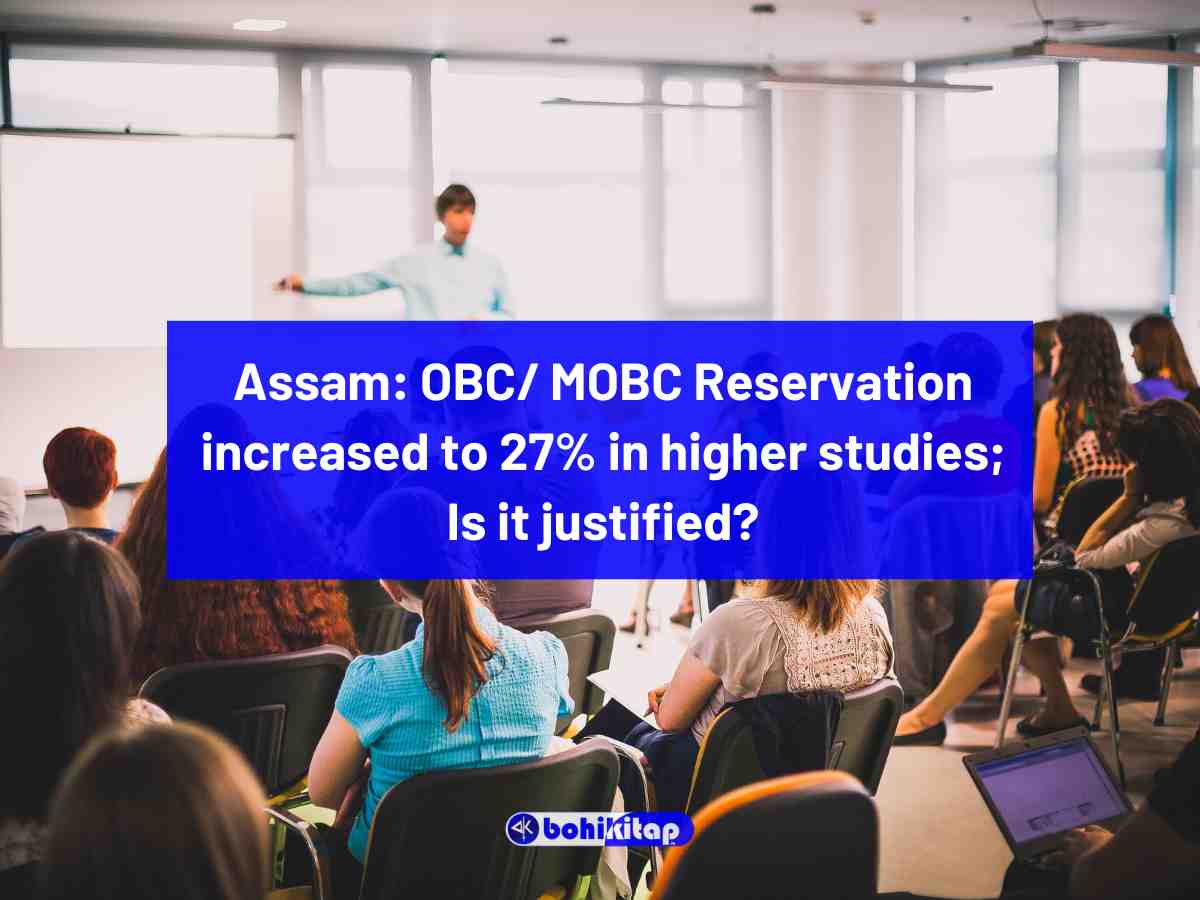Guwahati: The Assam Cabinet recently has taken the decision to increase the reservation of the Other Backward Class (OBC) from the existing 15% to 27% in Higher Education (State Universities and Colleges) in Assam.
Besides this, the cabinet has also approved providing specific reservations of seats to six distinct communities of Assam which will fall under the 27% OBC reservation in State ran higher education institutes. The six communities are Tai Ahom, Chutia, Moran, Motak, Koch Rajbonshi, and Tea Tribes.
Also read: Amrit Kaal in Assam! University tally reaches 29; students expect more
Distribution of seats under 27% of OBC reservation in the 13 Assam State-run Universities
Furthermore, the Assam Cabinet Minister of the Department of Higher Education, Ranoj Pegu has tweeted that Assam Government decided to substantially increase the number of seats reserved for the six communities – Tai Ahom, Moran, Matak, Koch Rajbangshi, and Tea Tribes in the Government Polytechnics and Engineering Colleges within the 27% of OBC reservation of seats.
Why reservation?
The main idea behind OBC reservation and reservation to specific groups is for incorporating the provision of reservation in the constitution of India to promote social justice i.e. there shall be no discrimination against any person on grounds of backwardness and equal opportunity shall be provided to every person.
But in the original constitution, there was no provision to provide reservations of seats in an educational institution. Later clause (4) was inserted in Article 15 in the constitution by the 1st Amendment in 1951, which enables the state for making any special provision for the advancement of any socially and educationally backward classes of citizens or the Scheduled Castes and the Scheduled Tribes.
Thus, Government uses this order of the directive principles of state policy for the formulation of reservation policies for educational institutions.
Is the 27% of OBC reservation Good? or Bad?
The increase in the percentage of OBC reservation seats is not something extreme or new by the Government of Assam because as per the reservation policy of India, the maximum percentage of seat reservations in any government institution follows the below ratio.
| General – Economic Weaker Sections (GEN-EWS) | 10% |
| Other Backward Classes (OBC-NCL) | 27% |
| Scheduled Caste (SC) | 15% |
| Scheduled Tribes (ST) | 7.5% |
| TOTAL | 59.5% |
The above count of 59.5% in total considering reservations for students from all the sections and in addition, these reserved category students will be valid to take admission under open category also, which means the reserved category students have got a minimum of 59.5% of seats whereas the students of General category or not belonging to reserved category have a maximum of 40.5% of seats. The question is does this matches the population distribution?
The ball may turn to any side, and maybe there is a need for more seats under the open category or otherwise the approach to provide equal opportunities for all people through the reservation of seats in education institutions need more reservation for the OBCs, STs, and SCs.
For more education news and updates, click here.
